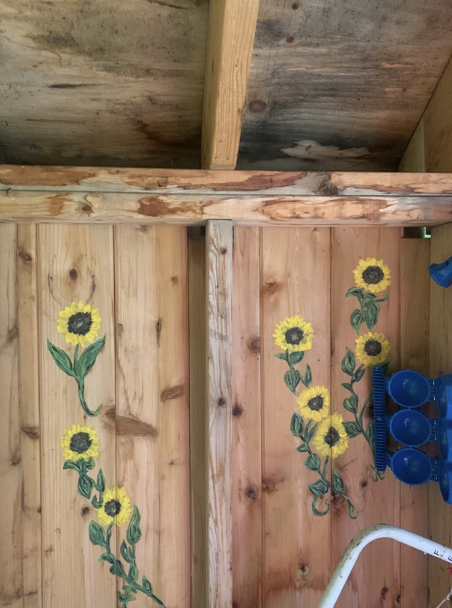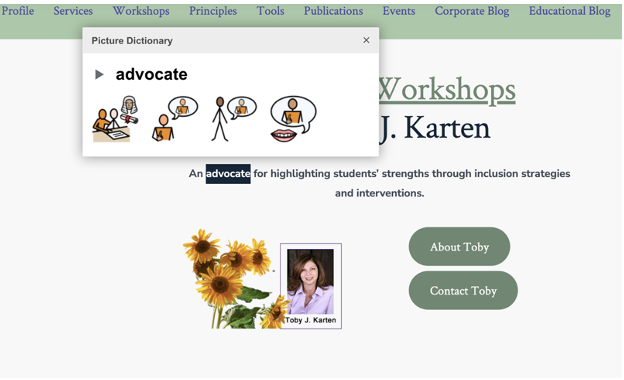
As I painted the sunflowers on the cedar planked walls of our A-shaped Vermont cabin, I smiled at the field that emerged. Broad and fine brushstrokes gave birth to each root, stem, leaf, and flower. Together they grew as I dug into the walls and feverishly painted. Some sunflowers overlapped and intertwined, some stood apart, some were taller, some were smaller, some had deeper hues and shades of ochre, cadmium yellow, and brown. Each sunflower, although different than the next, stood tall, immersed in a field of green.
As advocates, professionals use broad and fine brush strokes to propagate seeds that reach and teach learners to grow in that “field” called life. Each student is an individual learner in a collective classroom. My website, Inclusion Workshops, offers sunflowers, along with inclusion principles, strategies, and tools that assist professionals, students, and their families to know and grow. For inclusion to be appropriately implemented, it requires: a. structure; b. awareness; c. compassion; d. collaboration, and; e. reflection. The next 18 inclusion principles are applicable for all inclusion partners. As a consummate learner, you are invited to click on any of the 18 hyperlinks to find out more on how to propagate your “sunflowers.” And last, but not least, honor butterflies. They grow in stages and pollinate “other sunflowers.” Just remember, that like sunflowers and butterflies, school professionals, families, and students evolve as we embrace the sunshine together.

| Inclusion Principles for Professionals, Students, and Families |
| 1. Establish awareness of each student’s zone of proximal development (ZPD). |
| 2. Plan for outcomes (UbD) and structure the classroom environment accordingly. |
| 3. Subdivide concepts into their steps and tasks, valuing discrete task analysis. |
| 4. Offer practice for social skills. |
| 5. Show concrete, representational, abstract, and virtual examples. |
| 6. Provide academic accommodations and modifications that help, but do not enable |
| 7. Infuse (VAKT) visual, auditory, kinesthetic-tactile sensory elements |
| 8. Tap into student/staff strengths by communicating a growth mindset: “I can’t YET!” Simply put, create the environment that allows all learners to shine. More about DI at: https://www.solutiontree.com/blog/diverse-student-populations/#more-4836 |
| 9. Concentrate on children, not the label, have high expectations; acknowledge the challenges but focus on the solutions. |
| 10. Increase student self-efficacy and self-regulation. |
| 11. Offer positives before negatives to learners with affirmation and validation. |
| 12.Model and demonstrate desired outcomes for students with ASD, e.g., work samples, video clips, social narratives, adaptations, visual cues, rubrics. |
| 13. Vary instruction and assessments, and let the data guide your next steps. |
| 14. Relate to students’ lives; e.g., culture, ethnicity, gender, abilities, families. |
| 15. Teach basics and 3Rs across curricula with evidence-based UDL practices. |
| 16. Set up a pleasant, fun atmosphere with active learning opportunities and connections |
| 17. Increase student and staff self-awareness and reflection to advance social skills with data collection for positive behavioral interventions and supports (PBIS). |
| 18. Communicate & collaborate with colleagues, students, families, related service providers… Remember sunflowers rarely flourish in isolation! |
| Adapted from: https://inclusionworkshops.com/inclusion-principles/ Inclusion Strategies That Work! (Karten, 2015, 3rd Ed.) Thousand Oaks, CA: Corwin Press. |

